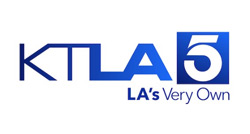
Date: 09/21/12
Topic: Taxation
Tax planning has been in a constant state of flux for the last several years. Such uncertainty has been fostered by Congress’s patchwork attempt of extending several business tax incentives. At present, several incentives have expired or are set to expire soon. Therefore, it is worthwhile to be aware of the changes and take into consideration the various scenarios for the future of these incentives.
CODE §179 EXPENSING
Presently code §179 gives businesses the option of claiming a deduction for the cost of qualified property all in its first year of use rather than claiming deprecation over a period of years. Qualified property means tangible personal property that is actively used in a business for which a depreciation deduction would be allowed. Such property must be new in the business, in other words property you previously owned but recently converted to business use would not qualify. Some examples of property that would qualify include office equipment, equipment used in the manufacturing process, and even off-the-shelf computer software.
Until now the code §179 dollar limitation has been $500,000 with a $2 million investment ceiling. For 2012 the amounts are significantly reduced, diminishing to $139,000 with a $560,000 investment ceiling. On its present course the code §179 dollar limit will fall to just $25,000 with a $200,000 investment ceiling in 2013.
Based on the above, businesses should aim at taking full advantage of this incentive while it lasts with an eye towards planning for its future reduction. Businesses should consider accelerating purchases into 2012 to take advantage of the generous expensing allotments and if equipment purchases for the year exceed the expensing dollar amount, decide how to split your expensing election among the new assets. It is recommended that you expense assets with the longest depreciation periods, as long as you start using the purchased equipment before the end of the tax year you get the entire expensing deduction for that year (the amount that can be expensed depends upon the date the qualified property is placed in service; not when the qualified property is purchased or paid for).
BONUS DEPRECIATION
Set to expire after 2012 is the 50 percent bonus first-year depreciation deduction. Unlike the §179 expense deduction, the bonus depreciation deduction is not limited to smaller companies or capped at a certain dollar level. To be eligible for bonus depreciation, qualified property must be depreciable under the Modified Accelerated Cost Recovery System and have a recovery period of 20 years or less. Businesses should be cognizant the relationship of bonus depreciation and the vehicle depreciation dollar limits. Code §280F(a) imposes dollar limits on the depreciation deduction for the year a taxpayer places a passenger automobile in service within a business, and for each succeeding year. The maximum depreciation limits under Code Sec. 280F for passenger automobiles first placed in service by the taxpayer during the 2012 calendar year are: $11,160 for the first tax year ($3,160 if bonus depreciation is not taken); $5,100 for the second tax year; $3,050 for the third tax year; and $1,875 for each tax year thereafter. The maximum depreciation limits under Code Sec. 280F for trucks and vans first placed in service during the 2012 calendar year are $11,360 for the first tax year ($3,360 if bonus depreciation is not taken); $5,300 for the second tax year; $3,150 for the third tax year; and $1,875 for each tax year thereafter. Sport utility vehicles and pickup trucks with a gross vehicle weight rating in excess of 6,000 pounds are exempt from the luxury vehicle depreciation caps.
NEW DE MINIMIS RULE IN REPAIR REGULATIONS
The new repair and capitalization regulations allows a taxpayer to deduct certain amounts paid or incurred to acquire or produce a unit of tangible property if the taxpayer has an Applicable Financial Statement (written accounting procedures for expensing amount paid or incurred for such property under certain dollar amounts) and treats the amounts as expenses on its AFS in accordance with its written accounting procedures. This creates a new planning vehicle for amounts paid or incurred in the tax year beginning on or after January 1, 2012.
DIVIDENDS
After 2012 the current favorable dividend tax rates will expire. Qualified dividends are eligible for a maximum 20 percent tax rate for taxpayers in the 25 percent and higher brackets and zero for taxpayers in the 10 to 15 percent brackets. Right now both houses of Congress have adopted different extension plans. If no further action is taken, qualified dividends will be taxed at the ordinary income rates after 2012 (with the highest rate scheduled to be 39.6 percent not taking into account the 3.8 percent Medicare contribution tax for higher income individuals). Qualified corporations may want to explore declaring a special dividend to shareholders before January 1, 2013.
EXPIRED BUSINESS TAX INCENTIVES
It has been routine in past years to extend and or renew certain business tax incentives. Nonetheless, the current federal deficit and spending cuts have placed lawmakers in a position to allow these incentives to expire permanently. However, certain incentives have bipartisan support and are likely to be extended, there include:
- Code §41 research tax credit
- Work opportunity tax credit (WOTC)
- 15-year recovery period for leasehold, and
- Retail improvement property
SMALL EMPLOYER HEALTH INSURANCE CREDIT
Employers with 10 or fewer full-time employees paying average annual wages of not more than $25,000 may be eligible for a maximum tax credit of 35 percent on premiums paid for tax years beginning 2010 through 2013. This credit is scheduled to climb to 50 percent of qualified premium costs paid by for-profit employers for tax years beginning in 2014 and 2015. Nevertheless, code §45R puts in place phase-out rules. The credit is reduced by 6.667 percent for each full-time employee in excess of 10 employees. Moreover, the credit is reduced by 4 percent for each $1,000 that average annual compensation paid exceeds $25,000. The effective result of this provision is the credit will be wiped out if an employer has 25 or more FTEs and pays $50,000 or more in average annual wages.
A forward looking approach that takes into consideration the above is the most effective way of ensuring the best possible outcome for your business.












